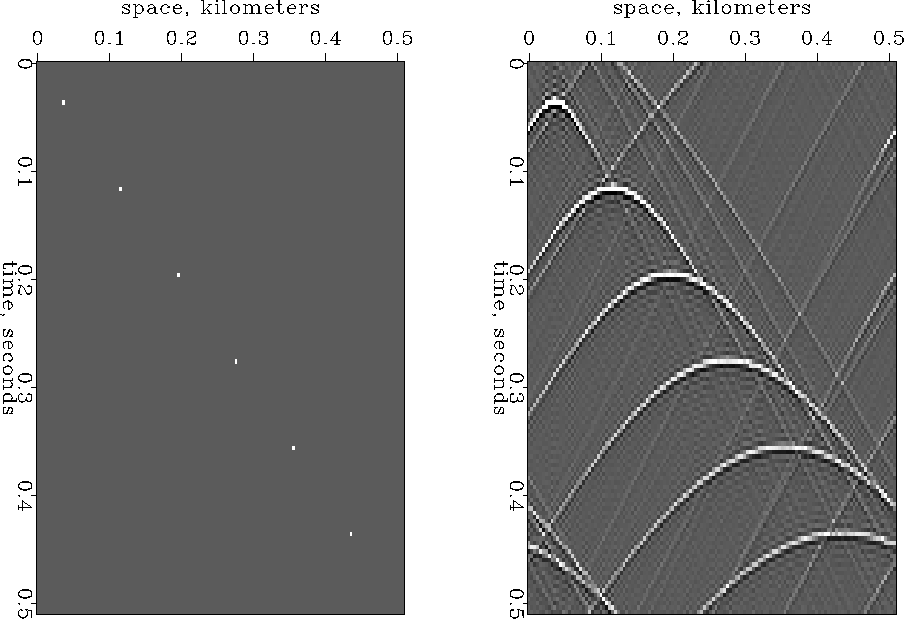
 |
(18) | |
| (19) |
The basic downward continuation equation for upcoming waves in Fourier space follows from equation (13) by eliminating p by using equation (18). For analysis of real seismic data we introduce a minus sign because equation (19) refers to downgoing waves and observed data is made from up-coming waves.
 |
(20) |
 |
Downward continuation is a product relationship
in both the ![]() -domain and the kx-domain.
Thus it is a convolution in both time and x.
What does the filter look like in the time and space domain?
It turns out like a cone, that is,
it is roughly an impulse function
of x2+z2 - v2 t2.
More precisely, it is the Huygens secondary wave source
that was exemplified by ocean waves entering a gap through a storm barrier.
Adding up the response of multiple gaps in
the barrier would be convolution over x.
-domain and the kx-domain.
Thus it is a convolution in both time and x.
What does the filter look like in the time and space domain?
It turns out like a cone, that is,
it is roughly an impulse function
of x2+z2 - v2 t2.
More precisely, it is the Huygens secondary wave source
that was exemplified by ocean waves entering a gap through a storm barrier.
Adding up the response of multiple gaps in
the barrier would be convolution over x.
Migration is more than downward continuation of wave fields. You start with a surface data set d(t,x) and downward continue it to all depth z getting d(t,x,z). Then you have the earth image by selecting the wavefield at time t=0 by the exploding reflector concept.
In practice, the downward continuation is done in the frequency domain.
Recall to find the zero frequency component ![]() we sum over all time t.
Interchanging time domain and frequency domain,
we realize that to find the exploding reflector signal at zero time f(t=0)
we can simply sum over all frequencies
we sum over all time t.
Interchanging time domain and frequency domain,
we realize that to find the exploding reflector signal at zero time f(t=0)
we can simply sum over all frequencies ![]() .
.
A nuisance of using Fourier transforms in migration and modeling is that spaces become periodic. This is demonstrated in Figure 5. Anywhere an event exits the frame at a side, top, or bottom boundary, the event immediately emerges on the opposite side. In practice, the unwelcome effect of periodicity is generally ameliorated by padding zeros around the data and the model.
 |